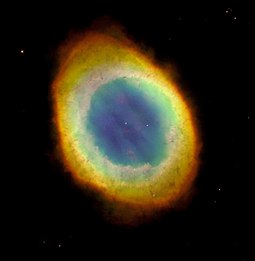Sometimes a name tells us about the way people used to think about something. An initial understanding or categorization may look odd or confusing in late of later findings, but a name may stick anyway because it has become so widely used. Here are a few examples from astronomy.

Planetary nebulae: These were named purely for a superficial visual resemblance, and they have nothing to do with planets. Planetary nebulae appear in small telescopes as faint disks, somewhat like planets. When they were first observed, no one knew what they were, any more than they knew that their friends the spiral nebulae were in fact vast galaxies separate from our own. Planetary nebulae are the gaseous shells thrown off by stars in our own galaxy as they near the end of their lives. It’s not as dramatic as ending up a supernova, but it’s a beautiful way for a star to go.
Population I, II, and III stars: This may sound like it describes a sequence of stellar populations where Population I is the oldest, but in fact they’re numbered depending on their composition, and Population I is the youngest. Young, I hasten to clarify, is a relative thing, and the sun, at 4.5 billion years old, is a Population I star. Stars in this classification have the highest metal content. To an astronomer, a metal is any element heavier than helium, which is not as perverse as it sounds because it marks an important distinction between the primordial elements and everything else, which was later synthesized in stars. So Population I gained its metals from the stars of a much earlier generation, Population II, which synthesized heavier elements during their lifetimes and spread them through the interstellar medium as they died. Population II stars are not pure hydrogen and helium, however, suggesting the existence of a hypothetical primordial metal-free Population III.
Early and late stellar types: The sequence of stellar types I mentioned in an earlier post (O B A F G K M) was once thought to represent a series of life stages that stars went through. Consequently, O, B, and A stars were identified as stars early in their life cycle, and K and M stars were considered old. You still see references to early and late type stars, even though that evolutionary model is obsolete.
Big Bang: This was originally a derogatory term coined by astronomers who believed in a steady-state universe rather than the expanding universe that key observations in the twentieth century suggested. As the expanding universe theory became better supported by observations, the name Big Bang stuck, although it suggests an explosion rather than an expansion and is almost certainly not the name that astronomers today would choose to describe the theory.
Learn more:
- Science, Religion, and the Big Bang video from MinutePhysics explains why the name Big Bang is confusing.
- Articles on Population II and Population III stars from Universe Today